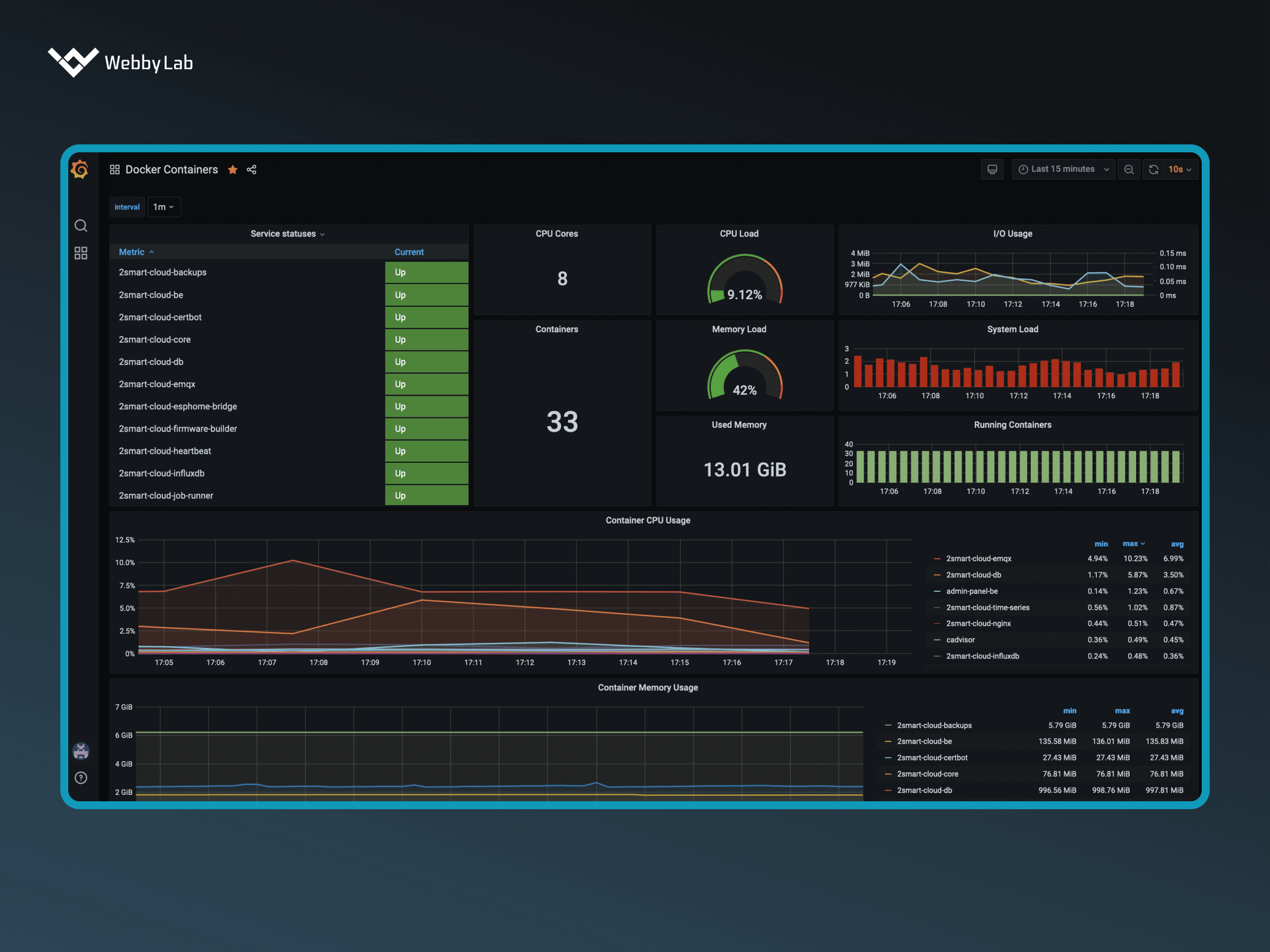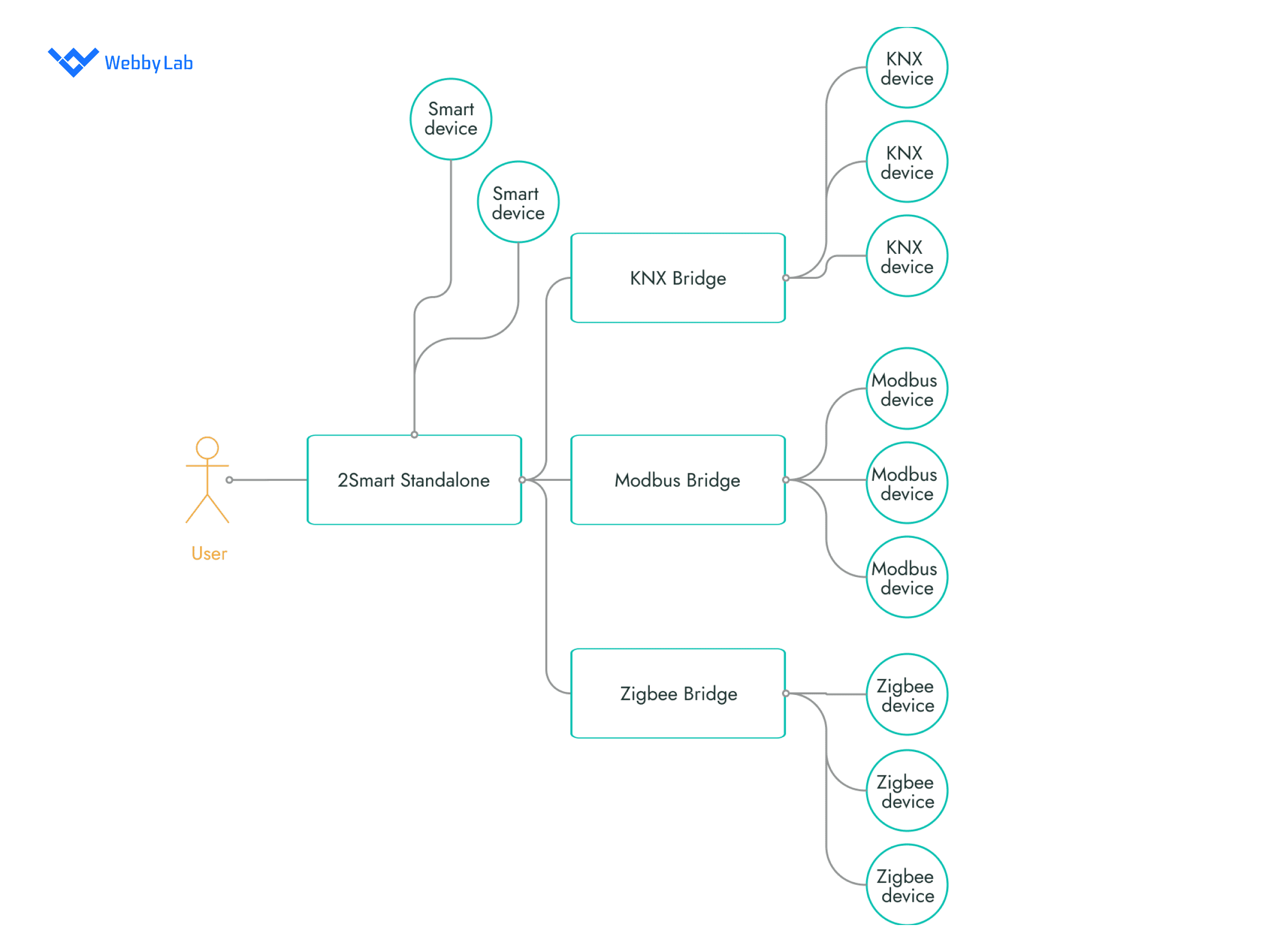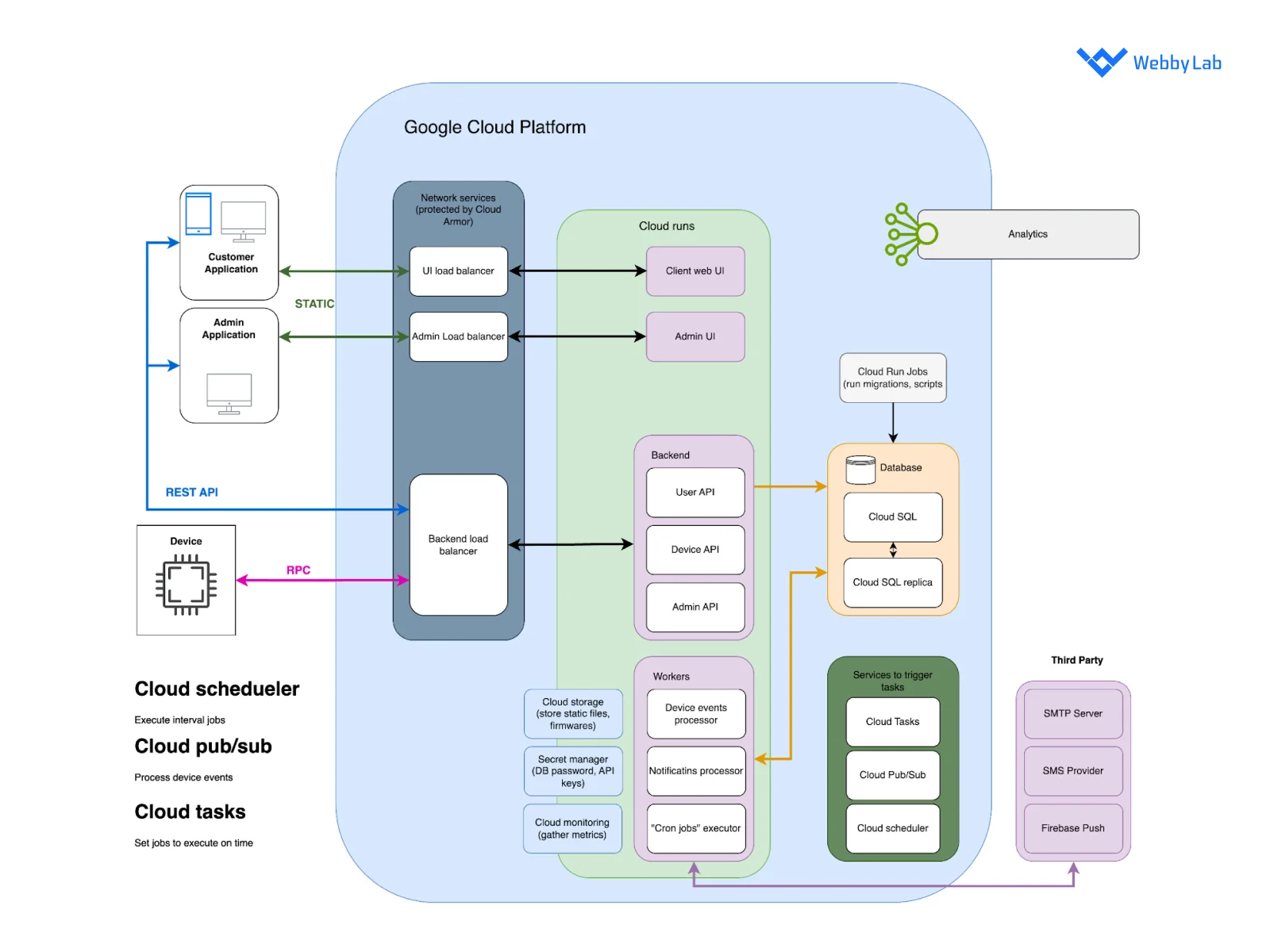From Layers to Components: IoT Architecture Explained
Written by:

Kostiantyn Oliynyk
Head of IoT at Webbylab
With a robust academic background in Telecommunication Systems Engineering, I apply my knowledge to lead innovations in the IoT domain. Starting as the first team member in the newly formed IoT department at WebbyLab, I've spearheaded its growth, fostering the expansion into embedded and hardware development alongside our core software projects. My dedication lies in pushing the boundaries of IoT technology, fostering a culture of innovation and excellence that profoundly impacts our clients' operational success.
In IoT end-to-end architecture, a gateway is an intermediary between the devices and the cloud. It facilitates bidirectional communication and seamless data flow.
What are the stages of creating an IoT architecture?
The typical stages of building an Azure IoT reference architecture or any other setup are:
- Installing IoT devices (sensors and actuators);
- Setting up the internet gateway;
- Establishing an edge IT system;
- Ensuring data centers and/or cloud storage.
Sensors are used at the very first stage of the IoT architecture. They are installed throughout the facility to collect data on parameters like temperature, motion, light, and beyond.
The cloud lets you store, process, and analyze data from IoT devices. It’s not only scalable and secure but also enables remote monitoring and management of devices. On top of that, it can be enhanced with machine learning algorithms and other tools for data analysis.
The data processing and analysis layer is responsible for aggregating and analyzing data in industrial IoT architecture or any other solution. It often uses advanced analytics and machine learning algorithms to turn raw data into valuable insights.

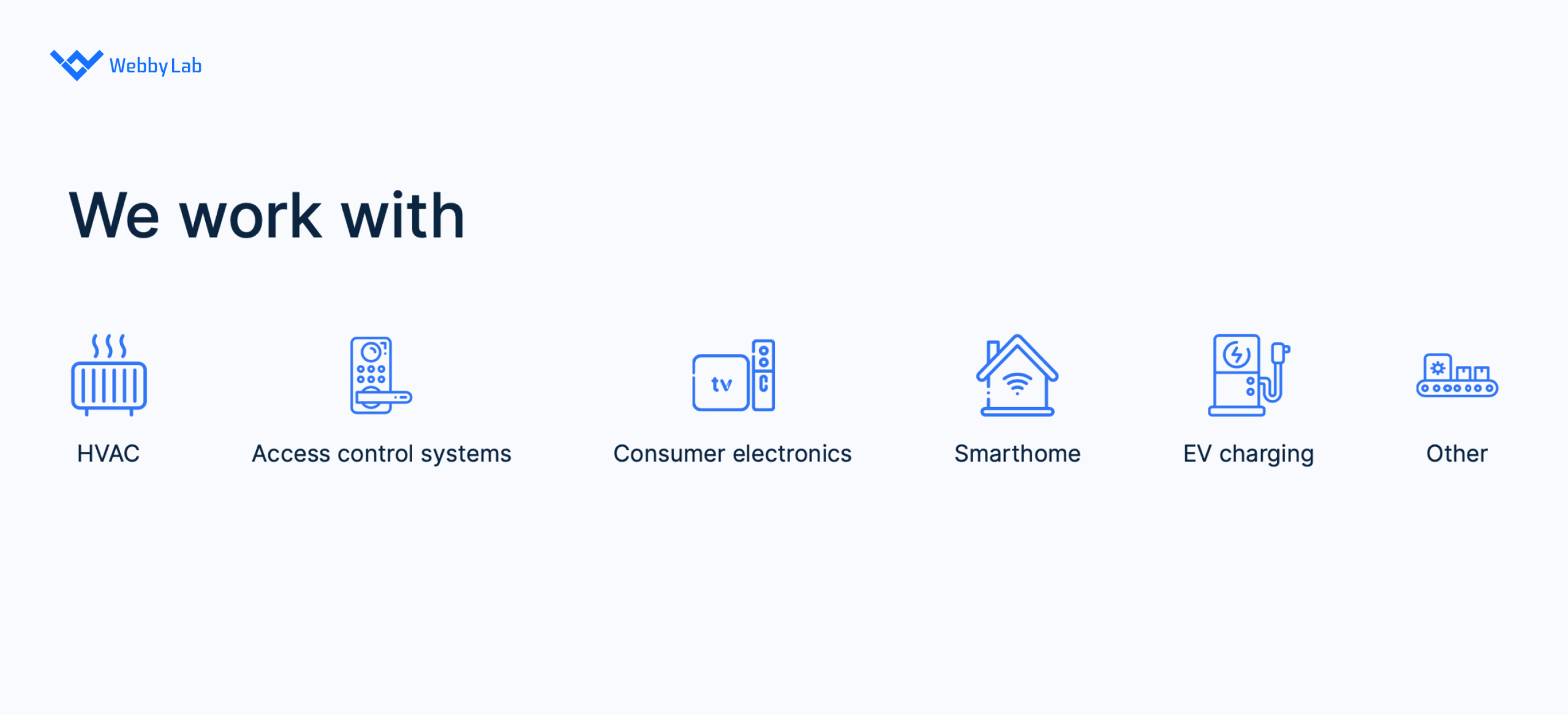 The industries WebbyLab works with
The industries WebbyLab works with The 2Smart Standalone automation platform developed by WebbyLab
The 2Smart Standalone automation platform developed by WebbyLab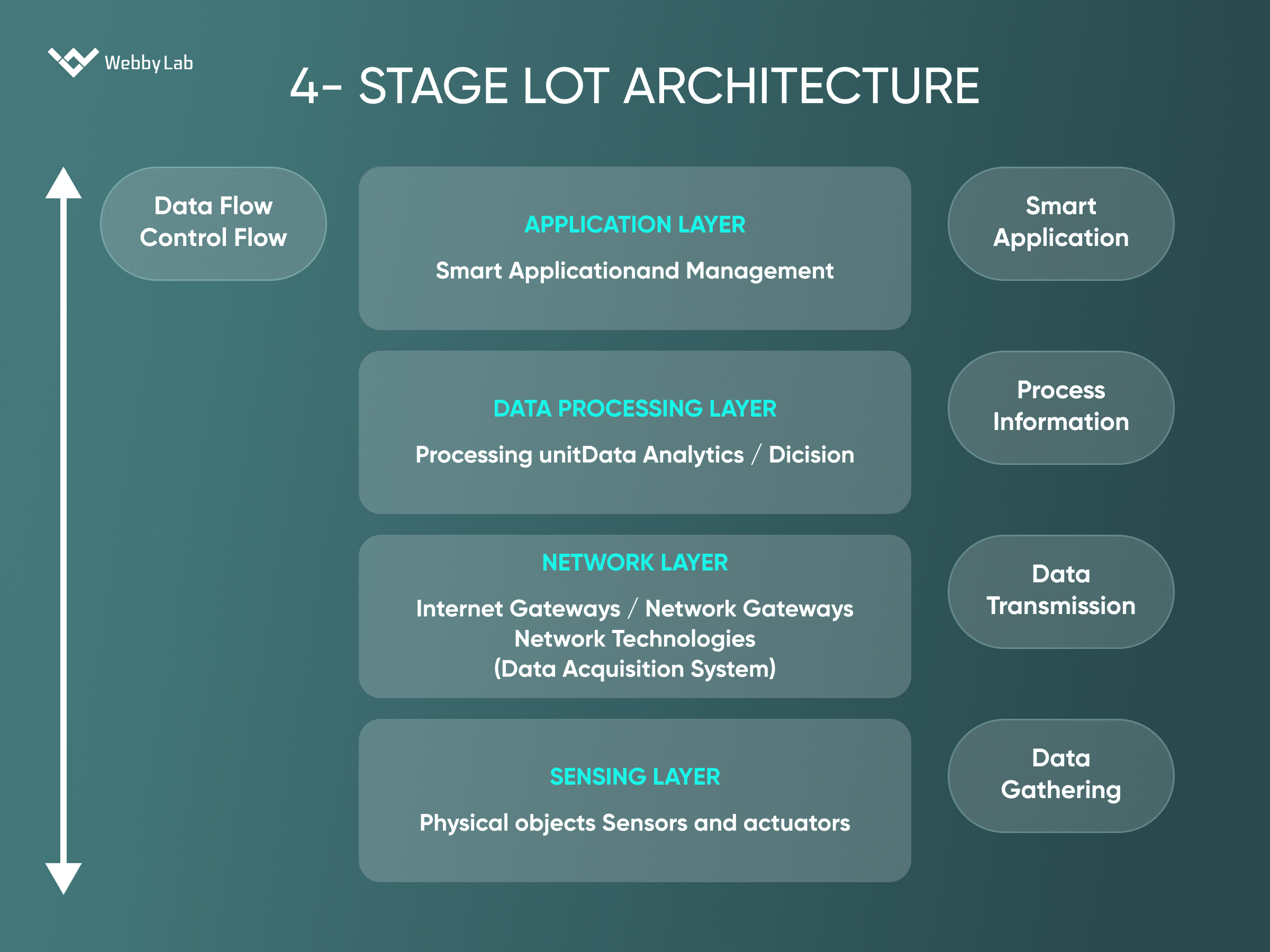
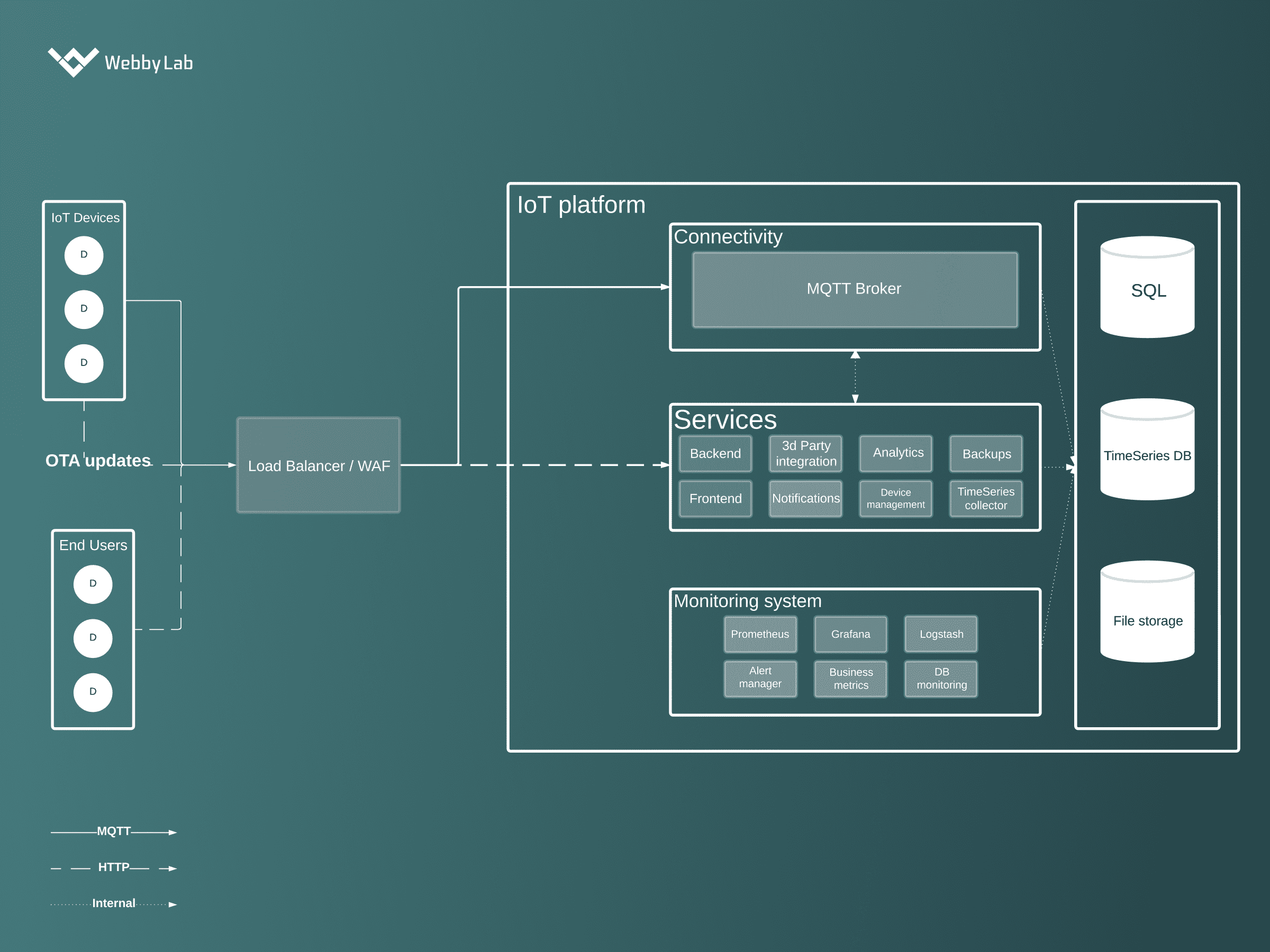 The diagram of a common IoT architecture
The diagram of a common IoT architecture